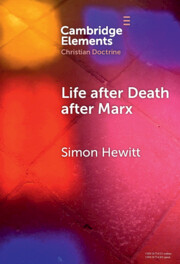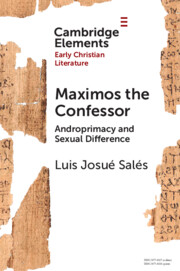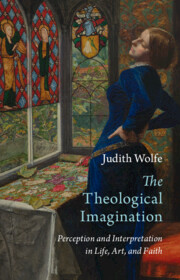Refine search
Actions for selected content:
140 results
6 - Reversal, Reciprocity, and Revenge in Sectarian Fantasies of Eschatological Violence
-
- Book:
- Violence, Power, and Society in the Dead Sea Scrolls
- Published online:
- 29 September 2025
- Print publication:
- 16 October 2025, pp 164-197
-
- Chapter
- Export citation
4 - Sectarian Identity, Intensified Conflict, and the Turn to Violence
-
- Book:
- Violence, Power, and Society in the Dead Sea Scrolls
- Published online:
- 29 September 2025
- Print publication:
- 16 October 2025, pp 93-131
-
- Chapter
- Export citation
7 - The Sign of His Presence
- from Part II - A Sign for This Generation: Reading the Gospels with Origen
-
- Book:
- The Life of Jesus in the Writings of Origen of Alexandria
- Published online:
- 26 September 2025
- Print publication:
- 16 October 2025, pp 142-167
-
- Chapter
- Export citation
7 - Violent Imaginaries and Practical Violence in the War Scroll
-
- Book:
- Violence, Power, and Society in the Dead Sea Scrolls
- Published online:
- 29 September 2025
- Print publication:
- 16 October 2025, pp 198-225
-
- Chapter
- Export citation
15 - Liturgy, Spirituality, and Piety
- from Part IV - Liturgy and the Life of the Churches
-
-
- Book:
- The Cambridge Companion to Christian Liturgy
- Published online:
- 19 September 2025
- Print publication:
- 09 October 2025, pp 268-282
-
- Chapter
- Export citation

The Cambridge Companion to Christian Liturgy
-
- Published online:
- 19 September 2025
- Print publication:
- 09 October 2025
Reframing Purgatory: An Issuantist Proposal Grounded in Aeveternity
-
- Journal:
- New Blackfriars ,
- Published online by Cambridge University Press:
- 22 July 2025, pp. 1-15
-
- Article
- Export citation
Chapter 8 - The Exile of Philosophy
-
- Book:
- Ovid and Plato
- Published online:
- 19 June 2025
- Print publication:
- 03 July 2025, pp 141-157
-
- Chapter
- Export citation
7 - Sermons for Lent, Good Friday, and Easter
- from Part II - Augustine’s Sermons on the Scriptures and Liturgical Feasts
-
-
- Book:
- The Cambridge Companion to Augustine's Sermons
- Published online:
- 26 May 2025
- Print publication:
- 12 June 2025, pp 133-151
-
- Chapter
- Export citation

Life after Death after Marx
-
- Published online:
- 18 March 2025
- Print publication:
- 17 April 2025
-
- Element
- Export citation

Maximos the Confessor
- Androprimacy and Sexual Difference
-
- Published online:
- 18 February 2025
- Print publication:
- 20 March 2025
-
- Element
- Export citation
8 - God’s Purpose
- from Part III - Reconfiguring the Story
-
- Book:
- Constructing an Incarnational Theology
- Published online:
- 09 January 2025
- Print publication:
- 23 January 2025, pp 188-215
-
- Chapter
- Export citation
E.L. Mascall and the Great Divorce: Human Agency and the Eschaton
-
- Journal:
- Journal of Anglican Studies / Volume 22 / Issue 2 / November 2024
- Published online by Cambridge University Press:
- 13 January 2025, pp. 573-590
-
- Article
-
- You have access
- Open access
- HTML
- Export citation
Senses of οὐρανός, Hebrews 12.25–29, and the Destiny of the Cosmos
-
- Journal:
- New Testament Studies / Volume 71 / Issue 1 / January 2025
- Published online by Cambridge University Press:
- 07 August 2025, pp. 80-91
- Print publication:
- January 2025
-
- Article
-
- You have access
- HTML
- Export citation
The Fate of the Dead between Origen(ism) and Orthodoxy in Gaza
-
- Journal:
- Harvard Theological Review / Volume 118 / Issue 1 / January 2025
- Published online by Cambridge University Press:
- 10 March 2025, pp. 61-84
- Print publication:
- January 2025
-
- Article
-
- You have access
- Open access
- HTML
- Export citation
22 - The Future of Jesus of Nazareth
- from Part V - Outlook
-
-
- Book:
- The New Cambridge Companion to Jesus
- Published online:
- 15 November 2024
- Print publication:
- 05 December 2024, pp 365-378
-
- Chapter
- Export citation
THE POTIDAEA EPIGRAM AND EURIPIDES’ SUPPLIANT WOMEN: AN INTERTEXTUAL READING
-
- Journal:
- The Classical Quarterly / Volume 74 / Issue 2 / December 2024
- Published online by Cambridge University Press:
- 19 May 2025, pp. 452-460
- Print publication:
- December 2024
-
- Article
-
- You have access
- Open access
- HTML
- Export citation
The problem of history in Thomas Torrance and Bernard Lonergan
-
- Journal:
- Scottish Journal of Theology / Volume 78 / Issue 1 / February 2025
- Published online by Cambridge University Press:
- 26 November 2024, pp. 61-74
- Print publication:
- February 2025
-
- Article
- Export citation
18 - Isaiah in the New Testament
- from Part IV - Afterlives of the Book of Isaiah
-
-
- Book:
- The Cambridge Companion to the Book of Isaiah
- Published online:
- 08 November 2024
- Print publication:
- 21 November 2024, pp 297-309
-
- Chapter
- Export citation

The Theological Imagination
- Perception and Interpretation in Life, Art, and Faith
-
- Published online:
- 09 November 2024
- Print publication:
- 07 November 2024
